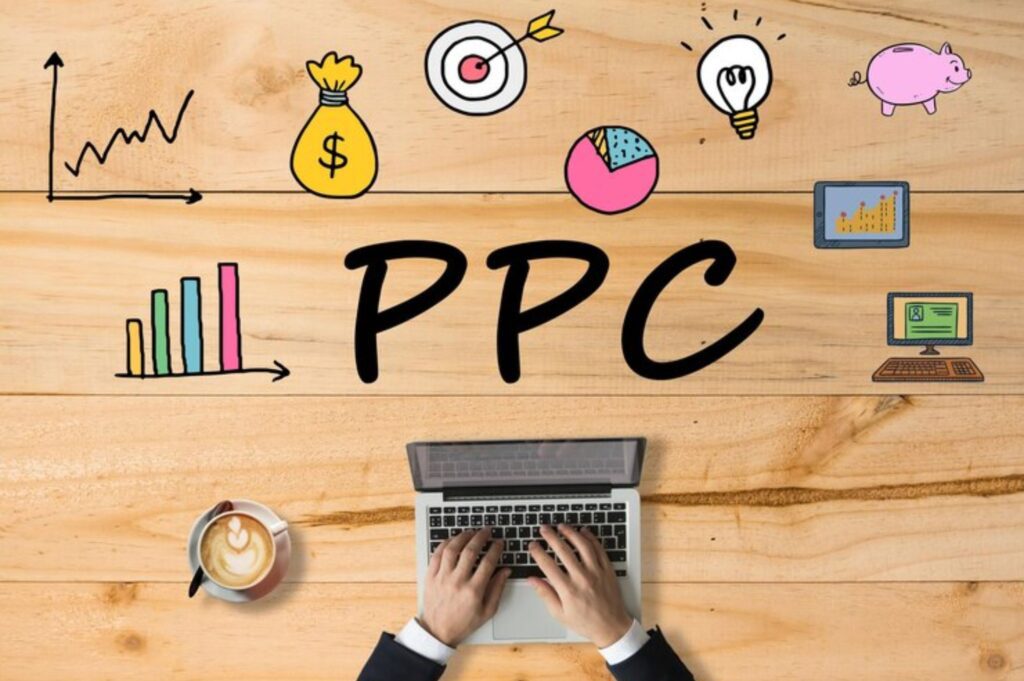

Pay per click (PPC) advertising is a popular digital marketing strategy that allows businesses to place ads on search engines, social media platforms, and other websites, and only pay when a user clicks on their ad. PPC advertising is a cost-effective way to reach a large audience and drive targeted traffic to a website.
In this article, we’ll explain the basics of pay per click advertising and how it works.
Table Of Contents
What is Pay Per Click Advertising?
How Does Pay Per Click Advertising Work?
The Benefits of Pay Per Click Advertising
Types of Pay Per Click Advertising
Creating a Pay Per Click Campaign
Measuring and Optimizing Your Pay Per Click Campaign
Common Pay Per Click Advertising Mistakes to Avoid
Pay Per Click Advertising FAQs
How Does Pay Per Click Advertising Work?
Pay per click advertising works by allowing businesses to bid on specific keywords or phrases that are relevant to their product or service. When a user searches for those keywords, the search engine displays ads related to those keywords. The order of the ads is determined by a variety of factors, including the bid amount and the relevance and quality of the ad.
When a user clicks on an ad, the business is charged a fee. This fee is determined by the bid amount and the competitiveness of the keywords. Advertisers set a daily budget for their campaigns, and once that budget is reached, their ads will no longer be displayed.
The Benefits of Pay Per Click Advertising
Pay per click advertising has a number of benefits for businesses of all sizes. Some of the most significant benefits include:
- Targeted traffic: Pay per click advertising allows businesses to target specific audiences based on factors such as location, demographics, and search history.
- Cost-effective: With pay per click advertising, businesses only pay when a user clicks on their ad, making it a cost-effective way to reach a large audience.
- Measurable results: Pay per click advertising provides detailed analytics and data that can be used to measure the effectiveness of a campaign and make improvements.
- Quick results: Unlike other forms of digital marketing, pay per click advertising can generate results quickly, often within hours or days of launching a campaign.
Types of Pay Per Click Advertising
There are several types of pay per click advertising, including:
Search Ads
Search ads are the most common type of pay per click advertising. These ads appear at the top of search engine results pages (SERPs) and are triggered by specific keywords. Search ads are highly targeted and can generate a high volume of traffic to a website.
Display Ads
Display ads are visual ads that appear on websites, often in the form of banner ads or pop-ups. These ads are less targeted than search ads but can be used to build brand awareness and reach a wider audience.
Social Media Ads
Social media ads appear on social media platforms such as Facebook, Instagram, and Twitter. These ads are highly targeted and can be used to reach specific demographics or interests.


Creating a Pay Per Click Campaign
Creating a successful pay per click campaign requires careful planning and execution. Here are some key steps to consider when creating a pay per click campaign.
Keyword Research
Keyword research is the foundation of any successful pay per click campaign. It involves identifying the keywords and phrases that are most relevant to your business and your target audience. You can use keyword research tools such as Google Keyword Planner or SEMrush to help you identify the best keywords to target.
Ad Copy
Once you’ve identified your keywords, you need to create compelling ad copy that will entice users to click on your ad. Your ad copy should be clear, concise, and relevant to the keywords you’re targeting. It should also include a clear call to action (CTA) that encourages users to click on your ad. These are some tips for writing effective ad copy
Landing Pages
When a user clicks on your ad, they should be directed to a landing page that is relevant to the ad they clicked on. Your landing page should be designed to convert users into customers, with a clear message, compelling visuals, and a strong CTA.
Bidding and Budgeting
Bidding and budgeting are important aspects of pay per click advertising. You need to set a budget for your campaign and determine how much you’re willing to pay for each click. Your bid amount will determine where your ad appears in the search results and how often it is displayed.
Measuring and Optimizing Your Pay Per Click Campaign
Measuring and optimizing your pay per click campaign is essential for achieving long-term success. Here are some key metrics to monitor:
Conversion Tracking
Conversion tracking allows you to track the actions users take on your website after clicking on your ad. This could include making a purchase, filling out a form, or downloading a whitepaper. By tracking conversions, you can determine the ROI of your pay per click campaign.
A/B Testing
A/B testing involves testing different variations of your ad copy, landing pages, and other elements of your campaign to determine which performs best. By testing different elements of your campaign, you can make data-driven decisions to optimize your campaign for better results.
Quality Score
Quality score is a metric used by search engines to determine the relevance and quality of your ad. A higher quality score can lead to lower costs per click and higher ad rankings. To improve your quality score, focus on creating relevant ad copy, landing pages, and targeting highly relevant keywords.
Cost Per Click
Cost per click (CPC) is the amount you pay each time a user clicks on your ad. By monitoring your CPC, you can determine how much you’re spending on your campaign and make adjustments to your budget and bidding strategy as needed.
Common Pay Per Click Advertising Mistakes to Avoid
There are several common pay per click advertising mistakes that businesses should avoid, including:
- Poor keyword selection: Choosing the wrong keywords can lead to irrelevant clicks and wasted ad spend.
- Poor ad copy: Your ad copy should be compelling and relevant to the keywords you’re targeting.
- Poor landing pages: Your landing pages should be designed to convert users into customers.
- Overbidding: Overbidding can lead to higher costs per click and wasted ad spend.
- Lack of testing: A/B testing is essential for optimizing your pay per click campaign for better results.

Conclusion
Pay per click advertising can be an effective way to drive traffic to your website and reach your target audience. By carefully selecting keywords, creating compelling ad copy and landing pages, and monitoring your campaign closely, you can achieve long-term success with pay per click advertising. Remember to measure your results and optimize your campaign regularly to ensure you’re getting the best possible ROI.
Pay Per Click Advertising FAQs
Q. What is a good click-through rate for a PPC campaign?
A good click-through rate (CTR) for a pay per click campaign depends on a variety of factors, including the industry, the type of ad, and the target audience. A CTR of 2-3% is generally considered good, but higher or lower CTRs may be acceptable depending on the circumstances.
Q. How can I improve my Quality Score?
To improve your Quality Score, focus on creating relevant ad copy, landing pages, and targeting highly relevant keywords. Improving your click-through rate and ensuring a high level of engagement on your website can also help improve your Quality Score.
Q. How much should I budget for a pay per click campaign?
The amount you should budget for a pay per click campaign depends on your business goals, the competitiveness of your industry, and the keywords you’re targeting. It’s important to set a budget that you’re comfortable with and to monitor your campaign closely to ensure you’re getting the best possible ROI.
Q. How long does it take to see results from a pay per click campaign?
The time it takes to see results from a pay per click campaign can vary depending on a variety of factors, including the competitiveness of your industry, the quality of your ad copy and landing pages, and your budget. Generally, it’s best to allow at least a few weeks to see meaningful results from your campaign.
Q. Can I use pay per click advertising for my small business?
Yes, pay per click advertising can be an effective marketing strategy for small businesses. By targeting specific keywords and demographics, you can reach your ideal customers and drive traffic to your website. However, it’s important to have a clear understanding of your goals and to carefully monitor your campaign to ensure you’re getting the best possible ROI.
Experience the Power of Effective Pay Per Click Advertising with AnalyticsXpert
At AnalyticsXpert, we specialize in providing top-notch pay per click advertising services to help businesses reach their target audience and drive traffic to their website. Our team of experienced PPC experts will work with you to develop a customized strategy tailored to your business goals and industry, ensuring you get the best possible ROI. We pride ourselves on staying up-to-date with the latest industry trends and techniques to deliver results that exceed your expectations. Contact us today to learn more about how we can help you achieve your marketing goals with our PPC services.

